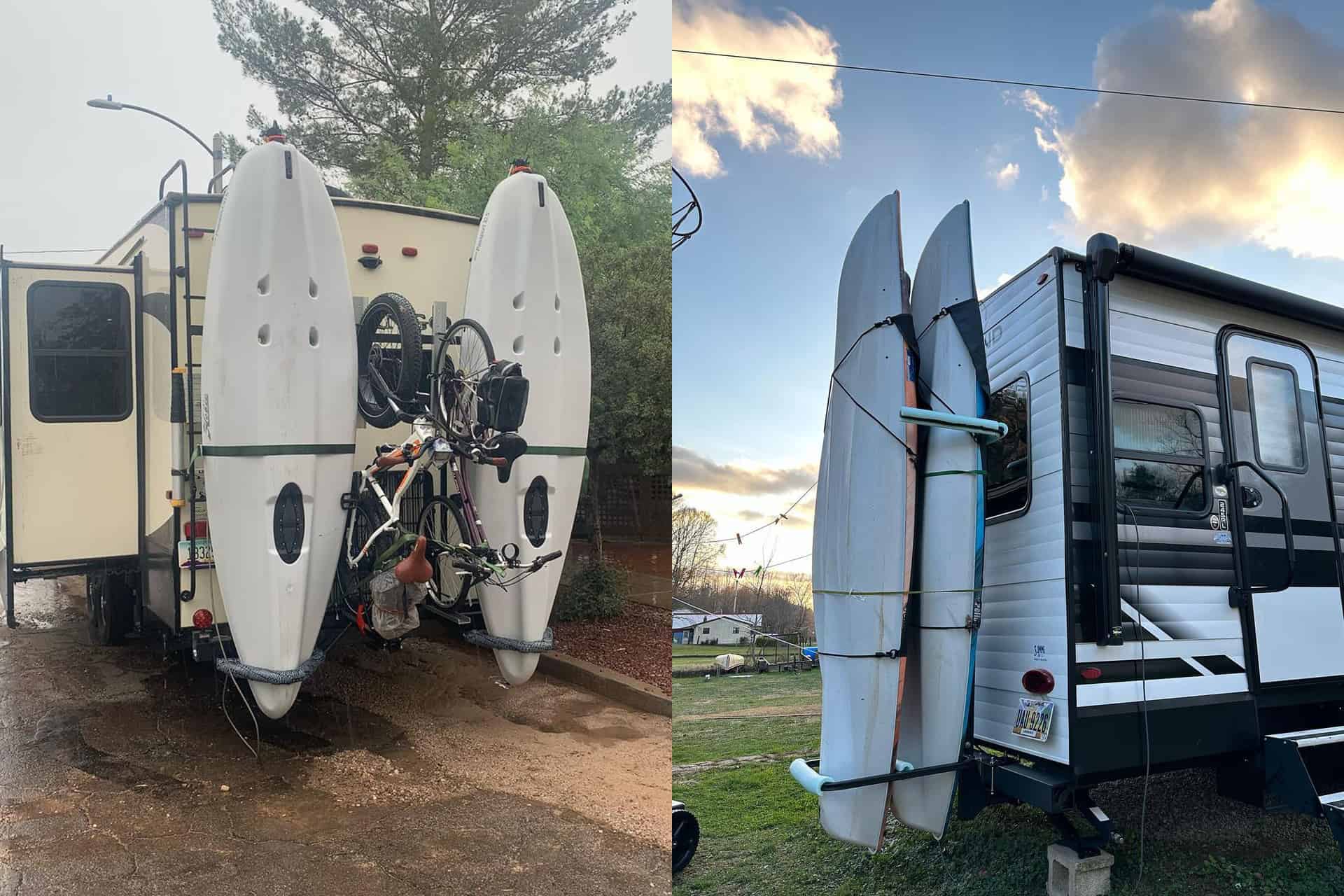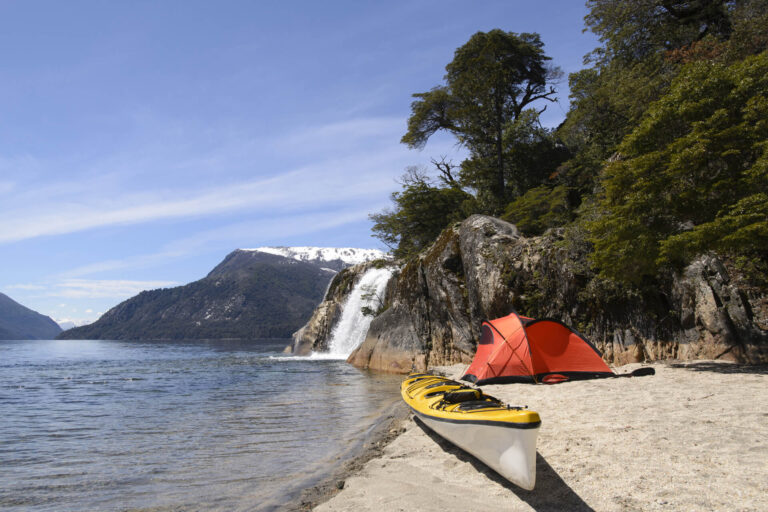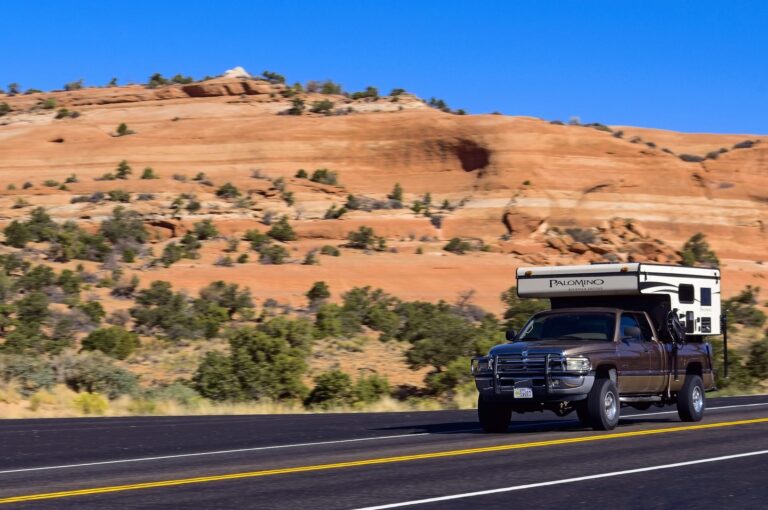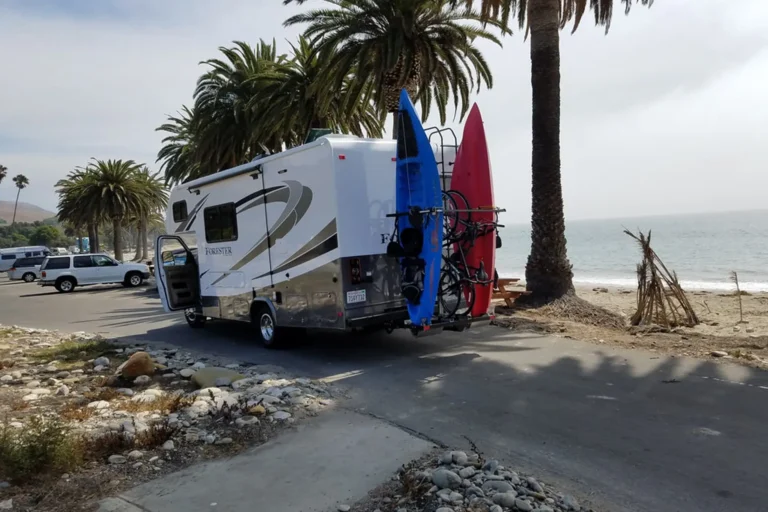How to Build a Kayak Rack for an RV
How to Build a Kayak Rack for an Rv? Building a kayak rack for your RV can be intimidating if you have an RV and want to start kayaking, as most people find it difficult to determine which racks fit and how to get started, let alone build their own.
So in this article, we will outline the process and provide you with all the details you need to make an informed choice. We’ll also discuss the many different types of racks, the supplies you’ll need, and how to assemble them. So read on for some useful advice, whether you’re a first-time builder or a seasoned master!
Before you pick up those tools and start hammering nails, there are a few important questions to consider. These include the type of RV rack you’ll use, where you’ll place it, how many RVs you’ll be transporting, and your choice of materials. So let’s get right to it.
Material For the Kayak Rack
PVC
PVC pipe is a popular material for kayak racks because it is strong, lightweight, and easy to adapt to any surface and shape. You can find it at most hardware stores, and if it breaks, it is easy to replace.
If you’re storing your kayak outdoors, it’s important that the PVC tube you choose is UV protected.
Aluminium / Steel
Another smart option for making an RV kayak rack is aluminum or steel. You can easily weld it or bolt and secure the panels to the RV because it is strong, lightweight, and easy to work with.
It is also resistant to rust and corrosion, so it will last longer in harsh conditions.
Metal’s weakness is that it’s not as durable as wood. It can bend or even break if you put too much pressure on it. It also costs more than wood.
If you decide to use metal, choose a thick gauge so that it can support the weight of your kayak.
Wood
Wood is often used to construct kayak racks. It may be heavy and difficult to work with, but it is strong and durable. If you decide to use wood, be sure to choose a hardwood that won’t rot or be harmed by insects. Redwood or cedar are good choices.
You will also need to seal the wood to protect it from the elements. Kayaks will undoubtedly be in contact with a lot of water, so you need to make sure the wood won’t swell or rot. A good sealant will protect the wood from UV degradation.
The fact that wood is more difficult to modify than certain other materials is another issue to consider; it can be difficult to change the design of a wooden rack if you decide to do so later.
The best option is to combine PVC with metal. This combination offers affordability, ease of maintenance, flexibility in design and strength.
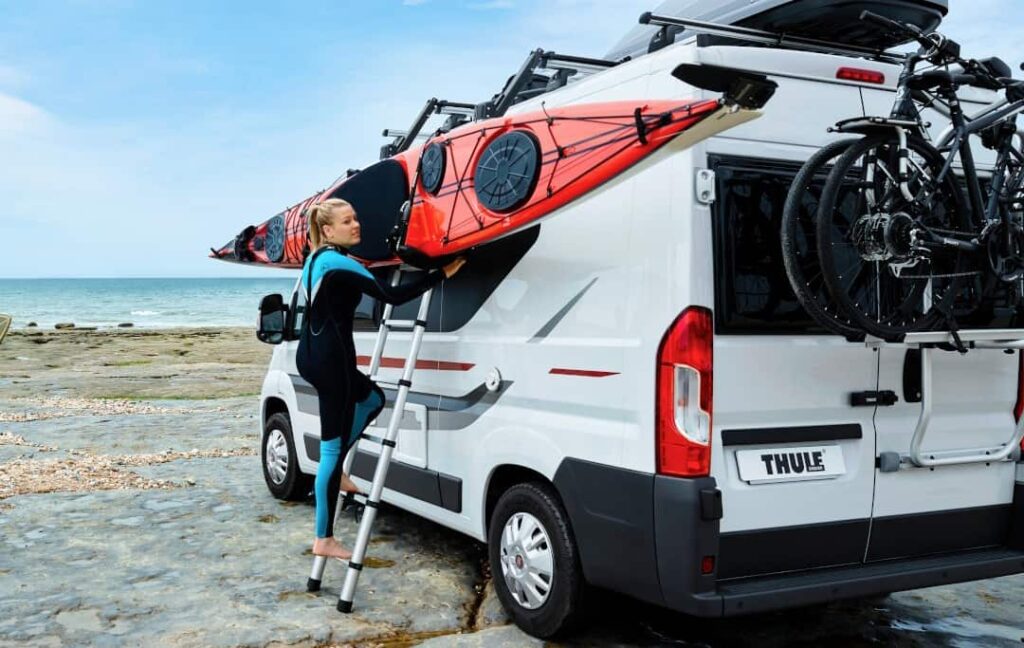
The Way to Build an RV Kayak Rack
Some of you may be wondering: is there another way to build a kayak rack other than buying a pre-built kayak rack?
Yes, you can. Some kayak racks don’t even require you to put them together, they just need to be mounted to the RV.
If you want to save on your budget, you can definitely make a DIY kayak rack yourself. This is also very fulfilling!
Whether you want to buy a pre-built kayak rack or build your own, read on and I’ll show you how to buy the right kayak rack for you and how to build your own kayak rack for use in your RV.
How to Build a Kayak Rack for an RV
However, you don’t have to start from scratch when building a kayak rack. In general, you can buy materials at your local hardware store and modify them to make a cool, inexpensive rack! We’ll walk you through each step needed to build a functional kayak rack. First, some tips on how to build the back rack!
1.Check Your RV’s Compatibility
You must determine if your RV can handle the conversion and added weight before you begin this job.
To properly measure the RV hitch, you must know the length, width, and height of the rear of your frame when measuring your RV. You can always consult the experts at your local RV store if you are unsure of the measurements. They should be able to assist you. Once you have the measurements of your frame, you can get started.
Keep in mind that a kayak can weigh between 100 and 130 pounds and a rack can weigh between 20 and 30 pounds.
2. Decide how many kayaks you want to carry
If you build a single kayak rack and your friend decides to join you on the trip, it would be disastrous. Once built, the rack would be a permanent item that couldn’t be easily changed.
In any case, you must construct a two-kayak rack for your RV; even if you only need to carry one kayak, you can save the extra space for another day. It is better to have something than to need it and not have it.

Build Kayak Racks on the Back of Your RV
1.Buying a Hitch Cargo Carrier
Your RV could benefit from the additional storage space provided by a cargo rack. They can serve a number of functions and are easy to install. In this case, we’ll use them to build our kayak rack. Racks are available online or at most auto supply stores. Make sure the one you choose is the right size for your RV. When choosing a rack, consider the weight capacity and size of your boats.
2.Mounting the Carrier
It’s time to assemble the carrier and attach it to the back hitch of your RV once you have it. Usually, all that is required to complete this task is to follow the carrier’s instructions. Most carriers come with the essentials, but you may need certain equipment to complete the task. Usually all you need is a drill and socket set.
There is also a much cheaper option. A good substitute is to strap milk crates to your RV. Why milk crates? They’re strong enough to hold the weight, and they’re the ideal size for kayaks. Most supermarkets carry them, or you can buy them online.
Drill holes in them large enough for the ends of the kayaks to fit securely. Then use rope or ratchet straps to secure them. You don’t want your kayaks to come loose while you’re driving!
There are several ways to do this, but we recommend ratchet straps. They are easy to use and will keep your kayaks secure. Just make sure the straps are tight enough to keep the crates from moving, but not too tight to damage the kayaks.
3. Foaming the milk crates
Now that the milk crates are attached to the carrier, it’s time to foam pad the crates. This will protect your kayaks from scratches and bumps during the trip. Most hardware stores carry foam padding, and you can buy it online. Trim it to fit, then secure it with glue or tape. Make sure the foam isn’t too dense so that it interferes with the ability of the box lid to close completely.
And that makes a great back rack for your RV! Now let’s move on to the DIY roof rack project.
Build Kayak Racks on the Roof of Your RV
Before beginning, there are a few things you need think about, but your roof type should be your first priority. Let’s talk about if the roof rack is feasible for your particular RV.
Bare roofs
The most challenging RVs to add a kayak rack to are those with bare roofs. However, there are a few solutions and it is still possible. The difficulty comes from the lack of attachment points on bare roofs, which are essential to this project.
Side rail roofs
You’re in luck if your RV has a side-rail roof. This is the easiest type of roof to attach a kayak rack to. Using U-bolts and straps, the rack is easily attached to the side rails that are already there.
Side rails are the ideal place to attach your kayak rack and can be either raised or flush.
Line roof rails with foam pool noodles
If you have roof rails, the process is relatively simple. Just place foam pool noodles along the rails. This will protect your kayak from dents and provide some cushioning in case of bumps.
If necessary, cut the pool noodles to fit the dimensions of your rails. To prevent the pool noodles from shifting during the ride, you also need to make sure they are securely attached. Using rope or bungee cords to tie them down is one way to do this. Whichever option you use, make sure the noodles are securely attached before moving forward.
Once the noodles are in place, your kayak can be easily positioned and secured.

Which is Better, a Roof Kayak Rack or a Back Kayak Rack?
We’ve discussed how to build a kayak rack on an RV, so which is best?
Roof racks
The most common way to transport a kayak in an RV is with a roof rack. These are often less expensive than rear racks, easier to install, and take up no space in the RV trailer.
But before you decide to use a roof rack, there are a few things to consider. First, make sure your RV has enough clearance to mount a kayak on the roof. The kayak must be able to be lifted easily onto the roof of your RV; if not, you may want to consider using a back rack.
Back racks
A back rack is a fantastic choice if you don’t have enough room to install a roof rack or if you don’t feel comfortable lifting your kayak on top of your RV. Back racks have the added benefit of bringing your kayak closer to the ground, which is great if you are worried about low-hanging branches or other obstacles damaging your kayak.
Disadvantages of back racks include the potential need for a larger vehicle to transport your kayak and the fact that they take up valuable room in your RV’s doors when not in use.
Small conclusion
I still want to say that it is recommended to put the kayak in the back of the RV. This is because it is easier to reinforce the area and build the kayak rack there. You can also use a ladder to secure the kayak, and once it’s loaded, it’s easier to unload it from the back.
The roof rack, on the other hand, is difficult to build and a pain to load and unload kayaks. It also takes up most of the space on the roof, so putting solar panels on it could be a problem.
How to Build a Kayak Rack RV From Metal Without Welding
Often these racks are used for motorcycles, extra coolers, generators, etc. However, they can be modified to accommodate your kayak.
Typically, the bottoms of these racks are made of metal mesh. It creates a snug fit for one end of the kayak by creating square holes in the mesh. To prevent the kayak from touching the metal edges, this cutout must be padded with foam or other non-damaging material.
There are several ways to secure the top of your kayak. You can combine a sturdy kayak rack with easy access by using a hitch-mounted bed extension! The double hitch receiver is essential to this configuration. It allows you to attach two accessories to the tow hitch at the same time.
The top of the kayak is supported and secured by the truck bed extender, which is often used to create a roof-height bar at the rear of the truck bed for transporting long items. To protect your kayak, you should also cover the metal bar with foam. This works very well with foam pool noodles.
How to Safely Transport a Kayak in Your RV
Now that your kayak rack is installed, it’s time to talk about safely transporting your kayak.
Always secure your kayak
This is probably the most important piece of advice when transporting a kayak in an RV. Always secure your kayak to a surface, no matter how short the distance. You don’t want it moving around or coming off while you’re driving!
J-Bars
There are several ways to secure a kayak. Using J-bars is the first option. J-bars provide a secure way to hold the kayak in place because they are made exclusively for kayaks.
Ratchet Straps
Ratchet straps also work well for attaching a kayak to an RV. They are easy to use and keep your kayak securely attached to the side of your RV.
Ratchet straps must be attached to a stable object on your RV if you plan to use them. The last thing you want is for the strap to damage your RV by coming loose.
Once the ratchet straps are attached, pull them tightly to make sure they’re secure, but not too tight – overtight straps can easily cause damage to your kayak. You can add any additional padding or covers you wish to prevent this. This will also help protect your kayak from dings and dents while you’re driving.
Bow and stern lines
In addition to the straps, you’ll want to secure the kayak with bow and stern lines. These lines, attached to the front and back of the kayak, serve to secure the kayak even if the straps become loose. If your roof does not have rails, this is also a convenient way to transport a kayak.
- Pass the lines through the loops on the straps.
- Tie them off at the front and back of the RV.
- Just make sure it’s rated for the weight of your kayak (or two kayaks if you’re carrying more than one), whatever you decide. And before you hit the road, it’s a good idea to double-check that your kayak is secure.
Drive safely with kayak
Now that your kayak is securely attached to your RV, it’s time to go. But remember to drive slowly and carefully, especially if you’ve never driven with a kayak before. Always choose safety over regret.
As you travel, stop occasionally to make sure everything is still attached. Also, give your kayak a good clean when you arrive at your destination to remove any debris or salt water.
Be mindful of the distance between your vehicle and nearby vehicles and surroundings. It shouldn’t stick out too far and cause a collision with an object or person while driving.
FAQ
What equipment is needed to build an RV kayak rack?
The following equipment is needed to build a great RV kayak rack:
- ¾” PVC tubing, fittings, and pipes
- 2”x12” boards
- ¾” EMT steel pipe
- 6’ long 1” steel angle iron
- 6’ long ¾” PVC pipe
- Spring pin and foam pipe
- Hand drill, bolts, screwdriver, and measuring tools
- 6’ long 2×6” wooden board
What is the Best Material to Use when Building an RV Kayak Rack?
A combination of these three materials would work best for an RV kayak rack because it would have the flexibility of PVC, the durability of wood, and the strength of metal. All three materials could be used to make various components of the rack to create a rigid, strong, and lightweight structure.
What is the Best Position for a Kayak Rack?
The rear mounted kayak rack is superior to the roof mounted rack. It’s easier to build and install, it’s easy to secure and adjust as needed, it’s easier to load and unload kayaks from the back than from the roof of the RV, and it doesn’t take up space that could be used for roof tents or portable solar panels.
How to Transport a Kayak on a Truck Camper?
The easiest way to do this is to purchase a kayak rack that is specifically designed to be mounted on the roof of your truck camper. These racks typically consist of a method for attaching the kayak(s) to the rack in addition to two or more crossbars that attach to the roof of the camper.
How Do You Secure a Kayak to a Trailer?
There are several alternative methods of securing a kayak to a trailer. Using ratchet straps is one such technique. Before tightening the strap, you should first loop it through the J-style carrier and around the kayak’s hull. Another option is to use bungee cords, which are similar to ratchet straps in that you can loop them around the kayak, but they have a little more give and won’t be quite as tight.
How Much Did It Cost You to Build Your Kayak Rack?
The cost of your kayak rack depends on the materials you choose to use. In general, building your own kayak rack is not too expensive; it can range from $50-$100, with the majority of the cost coming from purchasing the materials needed.
You should be able to find all the necessary materials at your local hardware store or online. And buying an already built kayak rack ranges from $500-$2,000.
Would You Advise Other People to Build a Kayak Rack for Their RV?
Yes, I would! Making the most of your space and having a convenient place to store your kayaks can be accomplished by building a kayak rack for your RV. Depending on the design you choose, it’s also a relatively simple job that can be done in a short amount of time.
It’s almost like having an extra storage room built into your RV without having to buy or permanently install anything if you have the right materials and equipment. A custom rack for your car is definitely something to think about if you enjoy spending time on the water with your kayak.
Conclusion
If you enjoy kayaking, a kayak rack is an essential accessory for your RV. Kayak racks are a great way to transport your kayak with ease and can be mounted on the roof or back of your vehicle.
We’ve covered every step in detail, including how to use the space and tools at hand and how to build a kayak rack for your RV.
Make smart choices and follow our comprehensive instructions to build a stylish, useful kayak rack for your RV.

